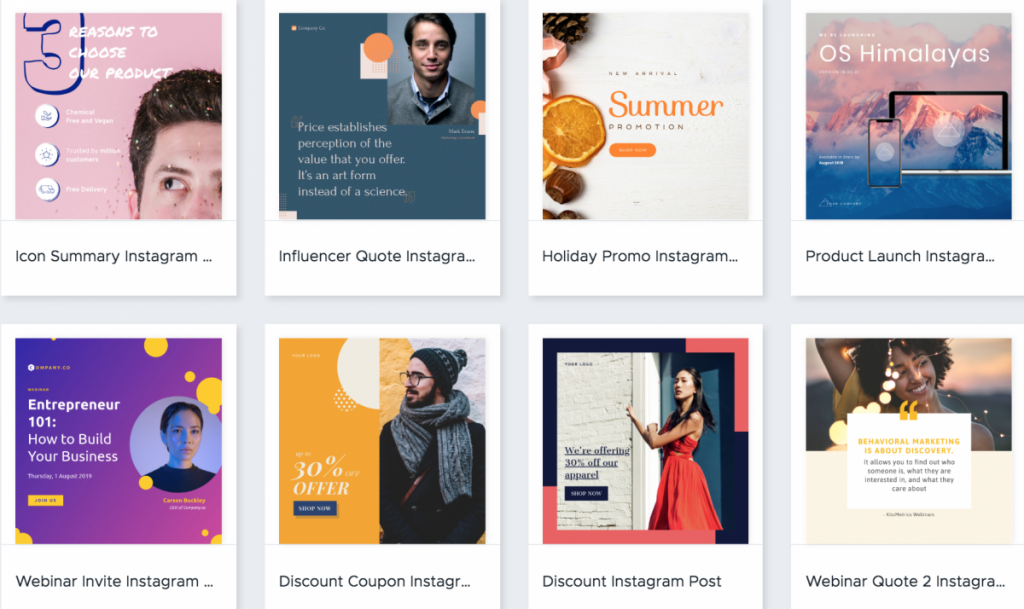I recently became a mom.
If you are a parent, you probably know what being a new mom or a new dad means. Sleepless nights, lots of bad hair days, and an influx of baby-related ads on your Instagram.
The baby sling I’m wearing on the picture below was discovered and bought via an Instagram ad.
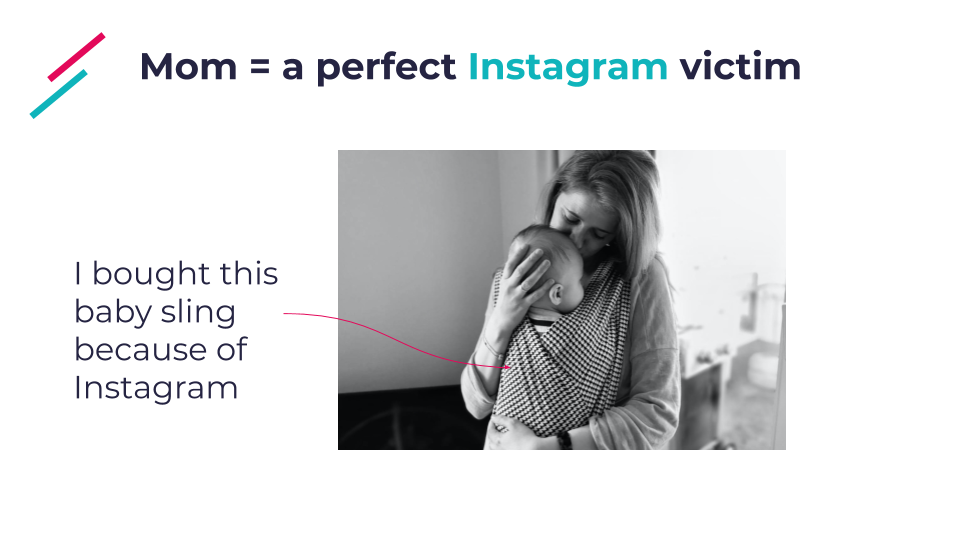
I wanted to find the right solution for carrying my baby around. I couldn’t decide between a sling or a baby carrier, so I started doing some online research and ended up leaving some cookies behind me 🍪🍪🍪…
After a bit, this is how my Instagram feed and stories looked like:
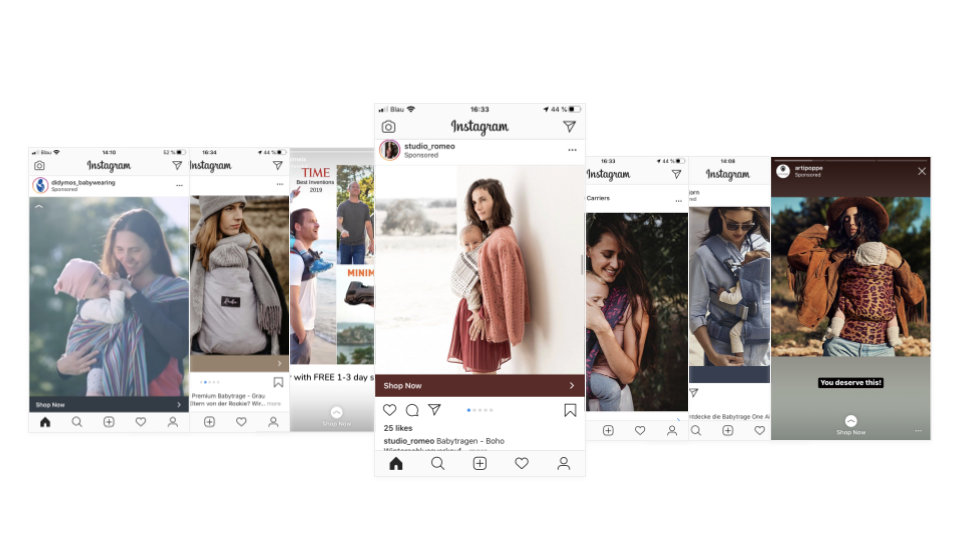
What started with 1 or 3 website visits and 1 Instagram like, resulted in perfect profiling of my ad interests: baby sling, babywearing, and bohemian style.
Using this information, Studio Romeo, a company I never heard of before, started showing me their ads. And guess what? Their ads, and the way they told the story behind their product and their company, convinced me. I ended up buying their baby sling.
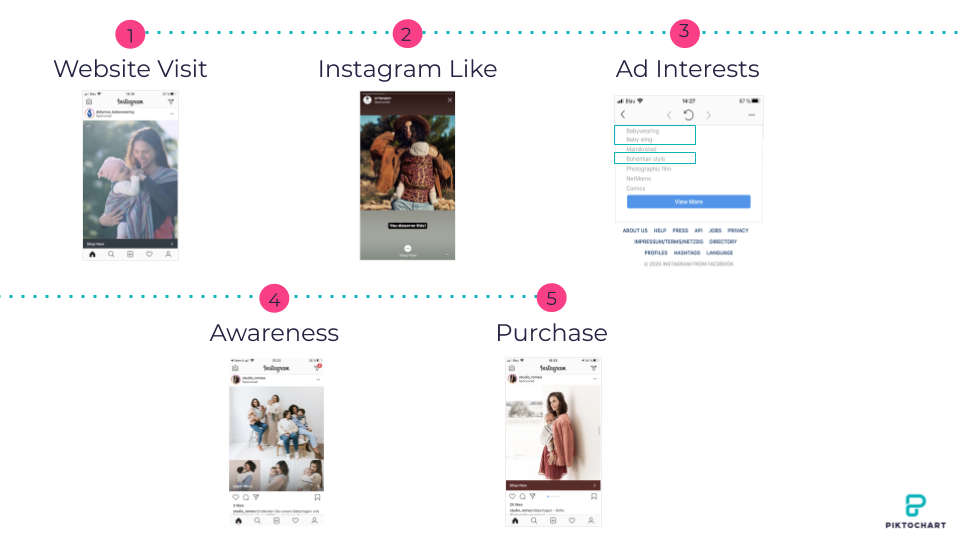
No doubt that Studio Romeo is not only great at targeting their ads but also at marketing their products.
But the reason why I wanted to share this story is that it proves that there is no better platform than Instagram to tell visual stories that sell.
What makes Instagram the perfect visual storytelling platform
First things first. What is visual storytelling?
Visual storytelling can be really powerful.
Our brains are incredible at remembering pictures. When we hear information, we are likely to remember only 10% of that information in three days. However, if a relevant image is paired with that same information, we retain 65% of the information for three days.
On top of that, according to the researchers at Michigan State University, visual cortex controls more than interpreting images.
It has decision-making power.
Combine that with the release of a trust hormone called oxytocin, which gets triggered when we hear stories. You gain trust plus decisions. What more can a marketer ask for?

What makes Instagram perfect as the platform for telling visual stories is that appealing images and short, picture-based stories are at its core.
On Instagram, ads do not only get seen, but they also tend to stick in people’s minds.

Instagram ads have a three times higher recall rate compared to other popular social media sites. Instagram also has the most engaged number of individuals among all social media platforms.
At the same time, the platform is optimized for the current age of information overload. The average global consumer spends 82 hours per week consuming information. That’s 69% of our wake time. As a result, even a 30-second video ends up feeling too much to us.
The short and crisp nature of Instagram stories makes them easier to consume.
Last but not least, Instagram provides credibility through Influencers, which consumers trust more than they trust brands.
Meet CUTENESS, your perfect Instagram ad formula
So how can you turn your Instagram ad into a great visual story that will end up selling your product?
To help you do that, I have created an easy to memorize ad formula called: CUTENESS.
If you feel you might forget the name, all it takes is to recall this cute puppy wearing a banana-print outfit (see below).
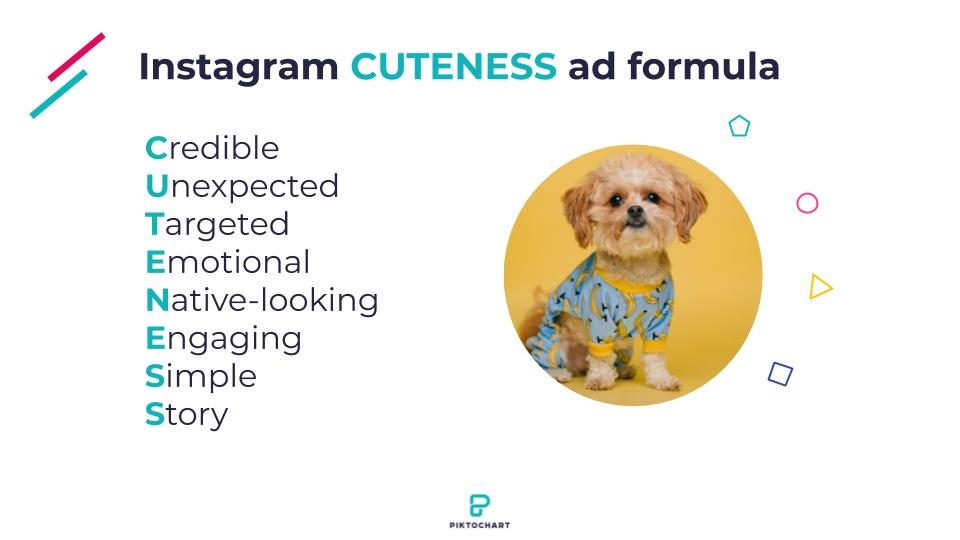
CUTENESS stands for:
- Credible
- Unexpected
- Targeted
- Emotional Native-looking
- Engaging
- Simple Story
I have compiled examples of some of the greatest (in my opinion) Instagram ads. This will help me to illustrate better what each of the formula elements means in practice.
Credible
Let’s start with credibility.
People will believe and relate to your story as long as you manage to make it credible and authentic.
You can achieve it through testimonials or personal experiences of people who are widely known and trusted.
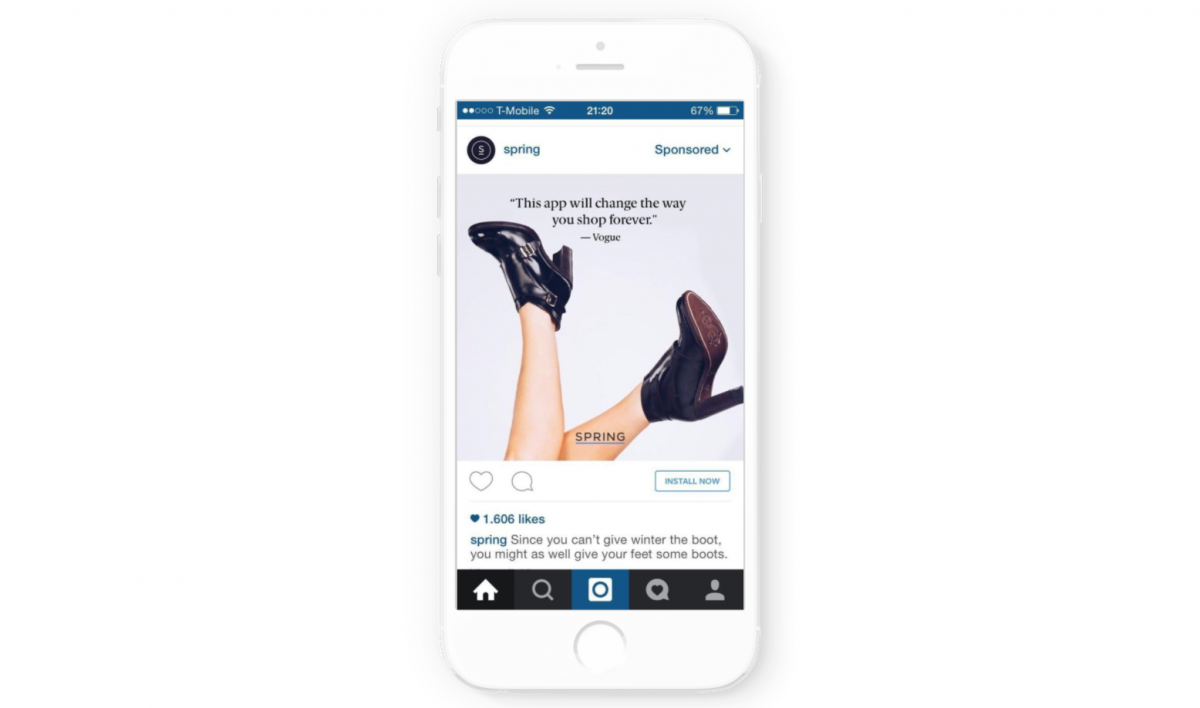
In the first example, you can see an ad from Spring app.
It’s a simple picture of shoes with a powerful testimonial from a well-known and established media outlet Vogue: “This app will change the way you shop forever.” Getting a recommendation from a known brand like Vogue can help to convince a broad audience to give it a try.
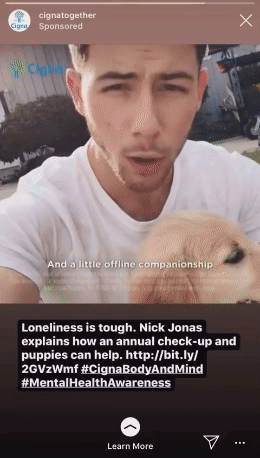
In the second example, we have a campaign from Cigna Health Insurance, who collaborated with Nick Jonas to encourage patients to be seen by a doctor for essential physical and mental evaluations. This campaign has reached 14 million people and had an 8-point increase in ad recall by placing ads in Instagram feed and Stories.
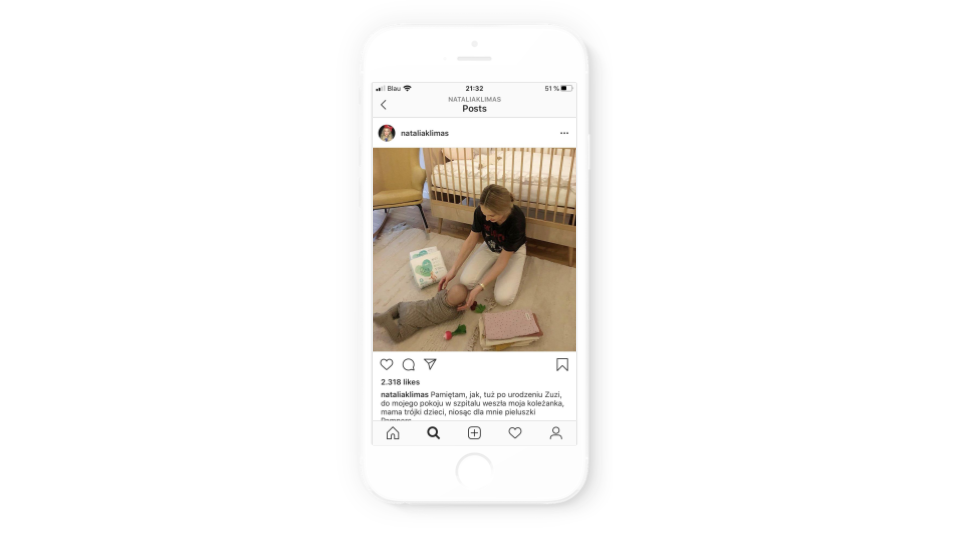
The last example is from a Polish actress that I follow. Just like me, Natalia Klimas recently became a mom. She collaborated with Pampers Pure to publish her personal story, where she shared her experiences using the product.
Unexpected
Instagram is about grabbing attention.
Make sure your ad stands out from the crowd by being unique.
A great example is the ad from Promo.com which uses attention-grabbing video clip combined with a funny headline.
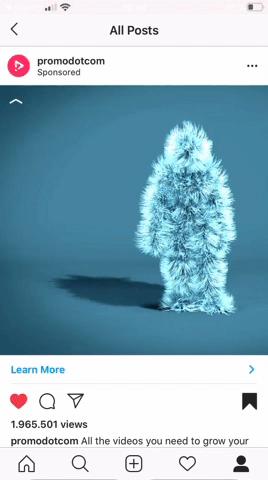
I also really like the ad by a photographer Caroline Tran. She used a series of stop motion images. She animated them into a video, building a full story focused on the problem of lightning in photography.
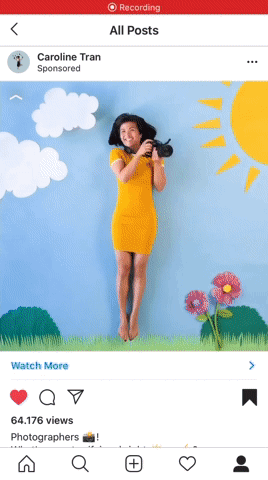
You could also simply combine a still, bright, eye-catching image with a bold statement like the company Ritual did it.
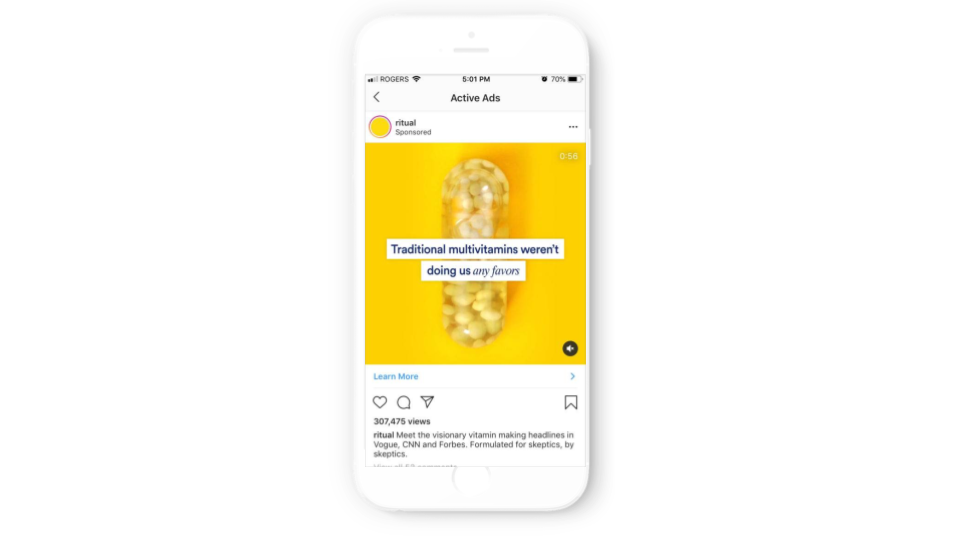
Targeted
Think like your audience.
Do your homework to understand who your audience is and what their interests are. You do not need to start from scratch. If your company has buyer personas, the best approach is to follow the information when defining your Instagram target audience.
Just like Facebook, Instagram advertising gives you the ability to target a particular set of people. This is what makes it so powerful! You can combine various factors:
- Location: You can select by regions, countries, states, cities, postal codes, to decide who should see your ads
- Age: You can decide if you want to target Millenials or other age groups by selecting a specific range of age.
- Gender: You can choose to show your ads to men, women, or any gender.
- Demographics: You can target or exclude people based on their education, employment, and lifestyle details.
- Interests: As you saw in the baby sling example, you can target or exclude people based on their interests. These interests get updated continuously based on past Instagram and Facebook activity.
- Behaviors: You can target or exclude people based on their purchasing behavior, device, travel behavior, or activities.
- Connections: You can target people who have connections with your Facebook Page, mobile app, or a specific event.
Look at your competitors, their followers, their comments. This will help you understand your potential audience better and create an ad that they can truly relate to.
Emotional
This element is all about making people care.
Remember that people care about people and not numbers.
Your goal is to tap into the emotions of your audience. When they see your ad, they should either feel inspired, uplifted, motivated, or touched.
My favorite example is the ad from Hurrahelden. They offer personalized books for kids. In their ad, they compiled videos of dads who open the book for the first time and read it to their child. The ad is very emotional and authentic.

But it doesn’t have to bring your audience to tears. It could merely build some sort of tension that will make your audience want to continue watching to see how the story ends.
This is what Mars Wrigley Confectionery did with its 5 Gum ad. Their video ad was engaging the viewers by showing them a thought-provoking question like “Would you make the move?”. A 5-second countdown followed this to a potentially life-altering scenario, such as a girl leaning for a kiss.
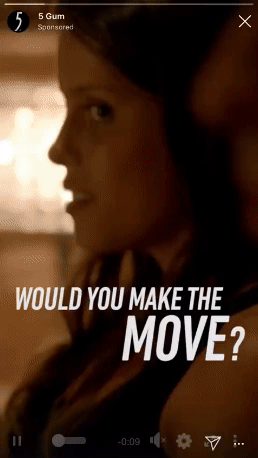
Native-Looking
When talking about authenticity, let’s move to native-looking.
How can you prevent banner blindness on Instagram and make sure that users won’t scroll to the next post immediately after seeing your ad?
You need to make it look like a native Instagram post. The more your ad looks and feels like native content typically posted by regular Instagram users, the better it’ll perform.
Go through the Instagram feeds of Instagram users matching your target audience. Style your ad pictures based on the style of photos they post.
This is what HTC did with their ad. They used the “follow me” Instagram series as an inspiration. This style of pictures went viral in 2013 and created a whole wave of copy-cats on Instagram.
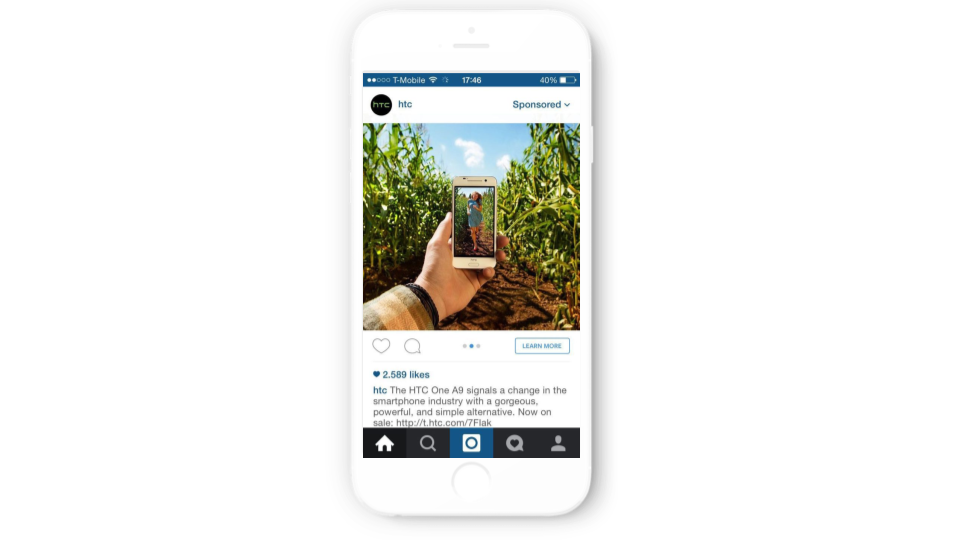
Engaging
The next element is one that is especially unique to Instagram Stories. Engagement.
Instagram Stories offer you an option to engage your audience through polling stickers.
A great example of how powerful this can be is the one from Dunkin’ Donuts. When Instagram first released its new polling sticker feature, the Dunkin’ team quickly moved to test it out in their ads. They then built a two-cell split test that consisted of running one version of the ad with the new polling sticker, versus running the same ad without the polling sticker.
The ad creative showed a chocolate Dunkin’ donut with sprinkles and a carton of french fries against a colorful animated background. The ad messaging asked: “What’s your favorite American classic? You don’t have to choose anymore! Try Donut Fries!” The ad then showcased the new Dunkin’ product, which is a mashup of Dunkin’ donuts in an easy-to-eat french fry shape.
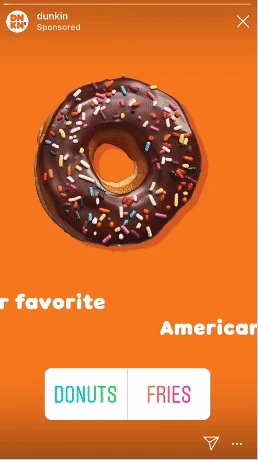
The ad that featured the embedded polling sticker used the same creative as the ad without the sticker, but it also included a 2-button poll directly under the messaging that viewers could click on to designate their choice of donut or fries. The results of the split test showed:
- 20% lower cost per video view for ads with the polling sticker versus ads without
- 20% of people who watched the ad voted in the poll
Simple
Don’t overcomplicate things.
Make it easier for your audience to quickly grasp what you are trying to tell them with your ad.
You could use before and after photos, catching word games like in the case of Aaptiv. They used a statement that many people can relate to “I hate cardio” and then just added “used to,” which is a surprising and simple way to grab attention.
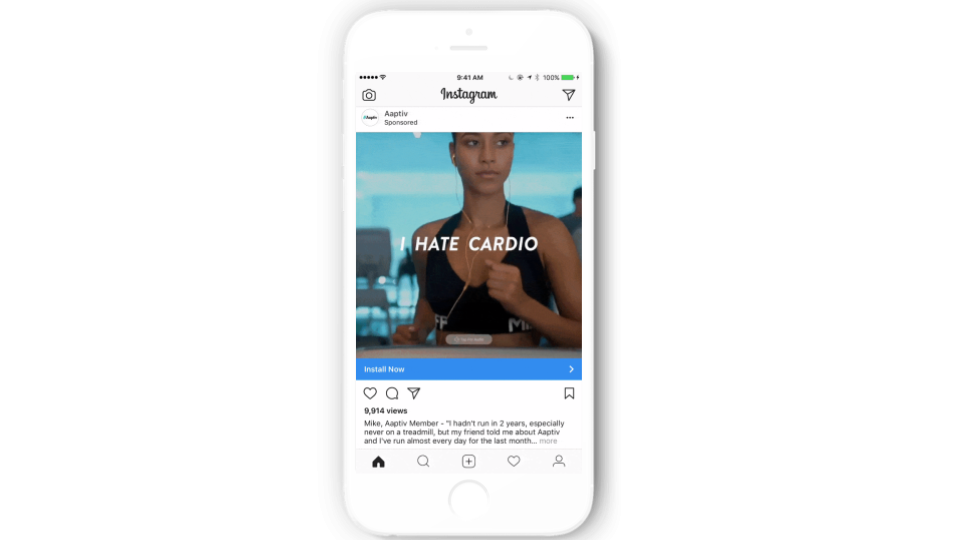
You could also use neat images with bold colors, which are simple but eye-catching enough to grab attention during scrolling.
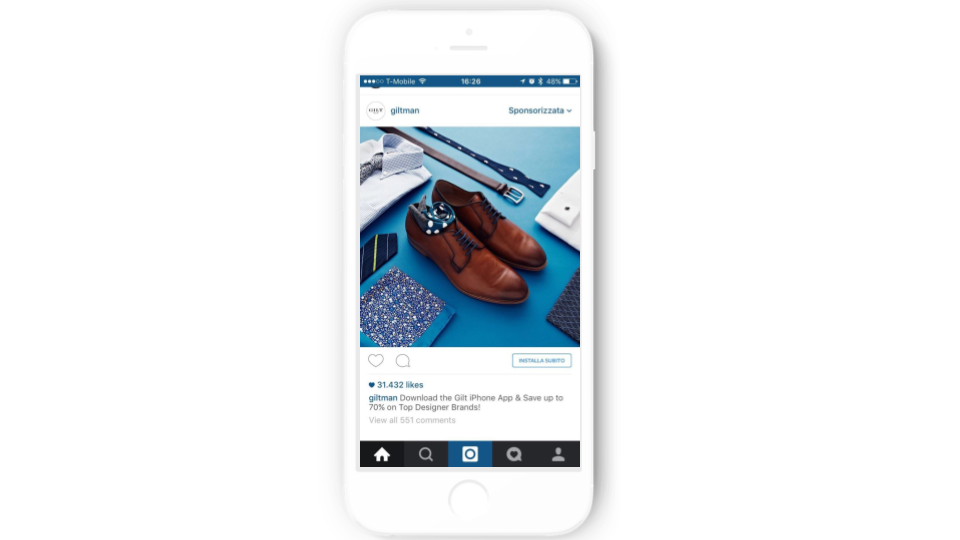
Story
And the last element is the story.
At the end of the day, it all comes down to great storytelling. It helps your audience to relate to your brand and quickly grasp what you are trying to tell them. Create an exciting story to show them how your product works, how it’s better from the competition, and how it’s made specifically for them.
A good example is an ad from Transferwise.
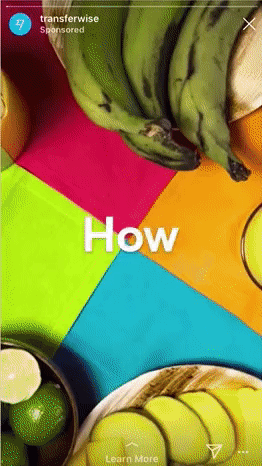
Recognizing that people don’t browse Instagram Stories with international money transfers on their minds, TransferWise built a concept around something that people do look at Stories for – recipe videos. Just as recipe videos can make cooking simple, TransferWise wanted to show how it can make international money transfers more accessible and straightforward. The internal creative team created video ads for Stories showing a variety of dinner tables to demonstrate how global the TransferWise product is, and used step-by-step recipe-like instructions to show how easy the app is to use.
The results suggest that fast and playful video ads struck the perfect tone. Instagram Stories drove 40% of monthly user activity, and conversion rates were between 5–10% higher for Instagram Stories than for ads that ran in the feed.
Choosing the right Instagram ad format
Now that we looked closely at all the elements of the Instagram Ad Formula, you might be asking yourself, which ad format would be best.
I put an overview showing how each of the formats fits with every element of the formula.
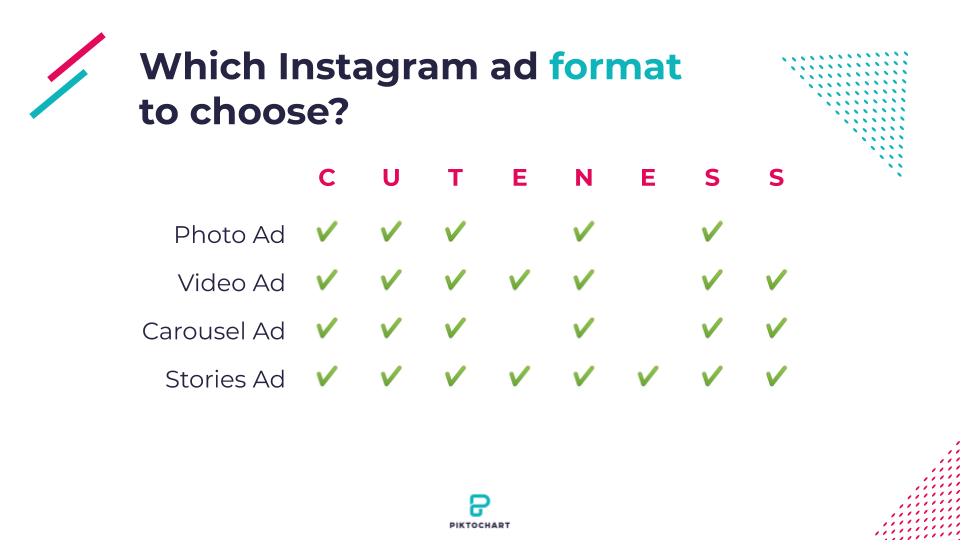
As you might have already guessed, Instagram Stories offer the best ad format for visual storytelling. On top of that, Instagram Stories ads are more economical than other ads running on the platform and are the only placement where demand hasn’t yet outstripped supply.
The number of people watching stories has generated so many ad placements that advertisers simply haven’t caught up. That’s why I would highly encourage experimenting more with this ad format.
To summarize. Let’s quickly go through a winning Instagram ad checklist:
- Match style to your audience
- Make it engaging and playful
- Tell a story
- Use clean, sharp, and intriguing visuals
- Provoke engagement or evoke an emotion
If you need inspiration for creating your Instagram ads, I recommend you check out Piktochart. Piktochart provides visual inspiration in the form of ready-to-use Instagram templates for posts or stories. All you need to do is to select one and edit it to make it your own.
I’m looking forward to seeing your fantastic Instagram ads (and maybe buying something from you.) 🤩
